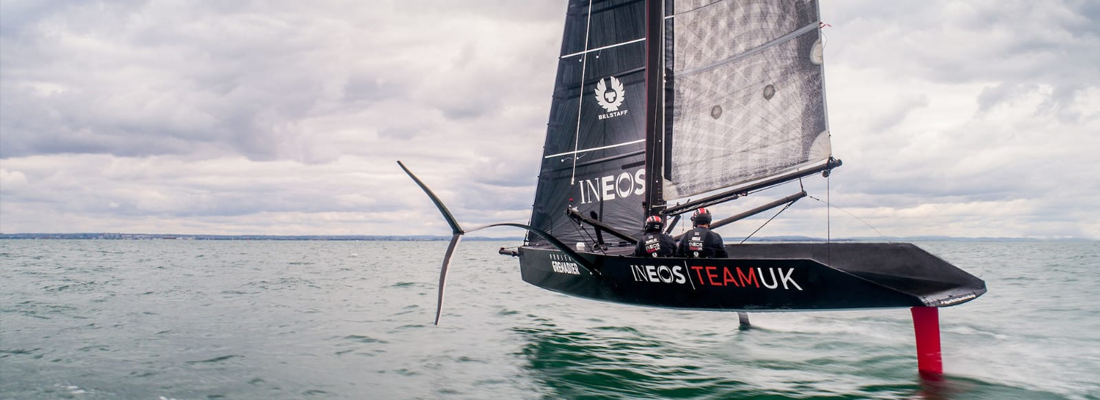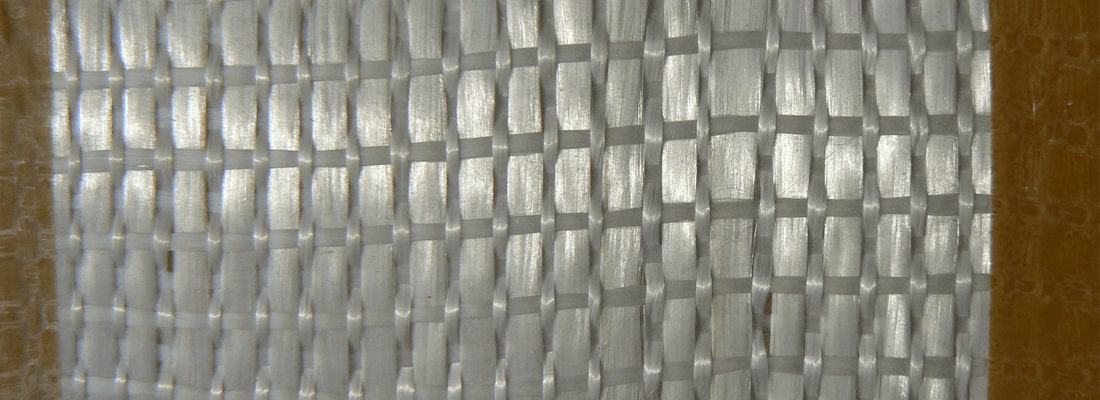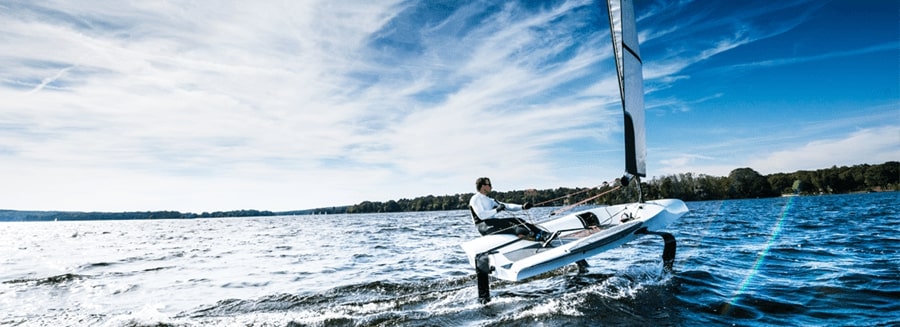From humble three-metre dinghies to the ‘monsters’ of the America's Cup, the Route du Rhum or the Vendée Globe, hydrofoil applications are the new hit across boating sectors. Since the last America's Cup, these spectacular catamarans, with hulls suspended well above the surface, have impressed professionals and laypersons alike. Perhaps the most striking aspect of hydrofoil technology are the long, thin side appendages resembling slender wings. But do you know how hydrofoils work and why the market is so enthusiastic about them?

Origin
A hydrofoil is a high-powered motorboat that uses underwater plates to lift the hull out of the water when moving at high speeds. The first modern hydrofoils were designed and built in the 1950s and ‘60s, but the origins of the concept are older than that.
The idea of using a ‘sheet’ – that is, a movable flat object – to facilitate the manoeuvring of a sailboat dates back to 19th-century England. An example is the centreboard, which can be lifted in shallow waters to make a boat more hydrodynamic. A centreboard has a symmetrical profile which counteracts drift but doesn’t generate lift on the vertical plane. Foils, on the other hand, function like the wings of an aircraft: their asymmetrical profile generates vertical lift, lifting the hull.
While the hydrofoil concept isn’t new a revolution was started by two factors. Firstly, the application of carbon composites enabled us to build very light, resistant boats with a slender profile. Secondly, the arrival of high-tech calculations and building techniques allowed dimensions to be carefully calculated and produced for every type of hull and wind.
Sailboats are symmetrical along their axis. When a sail is vertical, lateral forces can come from either side. Lifting foils must therefore be asymmetrical. The hydrofoil concept is simple: the boat rests on the horizontal fins of the foils (more or less in the shape of an inverted T) just below the water's surface. When increasing speed causes the foils to generate lift so that the hull rises, the surface of the hull in contact with the water is reduced, decreasing friction and increasing speed. The speed advantage is the reason why it was the racing boats that were the first to adopt foils.
A symphony in carbon
Why are carbon composites increasingly used in the marine industry today, both for pleasure sailing and competitions? And what exactly is carbon? We asked Sergio Abrami, who has been a yacht designer since 1971 and is one of the most experienced carbon experts in the world today, for clarifications. He explained that carbon fibre is produced through the oxidation, carbonisation and graphitisation of carbon-rich organic precursors that are already in fibre form.
< >
>
The most common precursor is polyacrylonitrile (PAN), which provides the finest end result. Carbon fibres can also be obtained from pitch in mesophase or cellulose (i.e. rayon). Variations in the graphitisation process lead to high-strength fibres (processed at about 2,600°C) or high-modulus fibres (processing at about 3000 °C). Once formed, the carbon fibres undergo a surface treatment to improve adhesion to the matrix (generally consisting of an epoxy base and a strip that serves to protect it during handling). Different types of fibres are characterised essentially by a different elastic modulus, which is a measure of pliability expressed in pascals (Pa).
< >
>
The mechanical characteristics of different types of carbon fibre
Depending on their mechanical characteristics, the sector divides carbon fibres into:
These numbers mean little to the uninitiated but do provide a quick bird’s-eye view. Here is a comparison between the characteristics of the different materials used in the nautical sector:
E-glass fibre: the most common material in nautical and non-marine constructions
S-glass fibre: the finest, used in special applications
< >
>
HM carbon fibre
The tensile strength of HM carbon fibre is slightly more than double than that of E-glass. But it is the stiffness, measured by elastic modulus, which really impresses at well over seven times that of E-glass fibre!
Not just for the America's Cup
Today, it’s not just racing boats that rely on foils to increase speed. Many pleasure boats and even dinghies deploy this technology to use them to speed across the water. Foils are now highly appreciated by the dinghy industry: what better solution than a foil to meet the key requirements of speed, convenience and manoeuvrability in this sector?
Take the foiling dinghy, designed by the German engineer Thilo Keller as a light, easy to arm and very fast boat (up to 25 knots). The hull is made of epoxy sandwich by vacuum infusion and weighs just 30 kilograms for 3.8 metres in length. The two foils retract automatically under the hull, making it easy to dry the boat or bring it onto the trailer. The hull appendages are 100% carbon or carbon and fibreglass. The choice of using polyamide 3D printing for some parts is also very interesting.
< >
>
At just over three metres, the Italian-made class 10 foiling drift is even smaller. According to Aurelio Proserpio of the ClasseDiecipiedi Association: “We chose to build a monohull foiler as a challenge for the 10th class. After 25 years and many boats and multihulls under our belt, I feel we needed a new challenge. […] These foils represent the future of performance sailing […] as well as a new way of being on the water."
Foilers & engines
The 2018 Dubai Boat Show saw the introduction of an all-carbon motorboat developed by ENATA and built in the UAE which was equipped with two foils that lift it from the water. Dubbed ‘Foiler’, this innovative model promises a smooth take-off, a soft landing and pleasant sailing. Its two 300 hp hybrid engines propel it to a maximum speed of 40 knots (74 km/h), with 17 knots (31 km/h) as take-off speed.
< >
>
Not much time has passed but everything has changed since 2013, when the America's Cup amazed the world with the spectacle of catamarans speeding across San Francisco Bay. Thanks to the continuous evolution of composite materials which now allow almost mass production, these hovering boats are now available to a wide public of enthusiasts. There is a wide choice, ranging from small dinghies to large catamarans.
Continuous technological evolution is leading to interesting developments in design and structural choices. The next America's Cup will take place in Auckland in 2021, marking a return to monohull boats with big sails and the inevitable T-shaped foils reminiscent of catamarans but never before used on America's Cup monohulls. Once these boats take off, they are expected to move at incredible speeds.
Flying objects during METSTRADE 2019
Flying boats will be part of the during the METSTRADE 2019 stage programme. Want to join the conversation during METSTRADE 2019? Subscribe to our newsletter and stay up-to-date on our registration dates and more!

